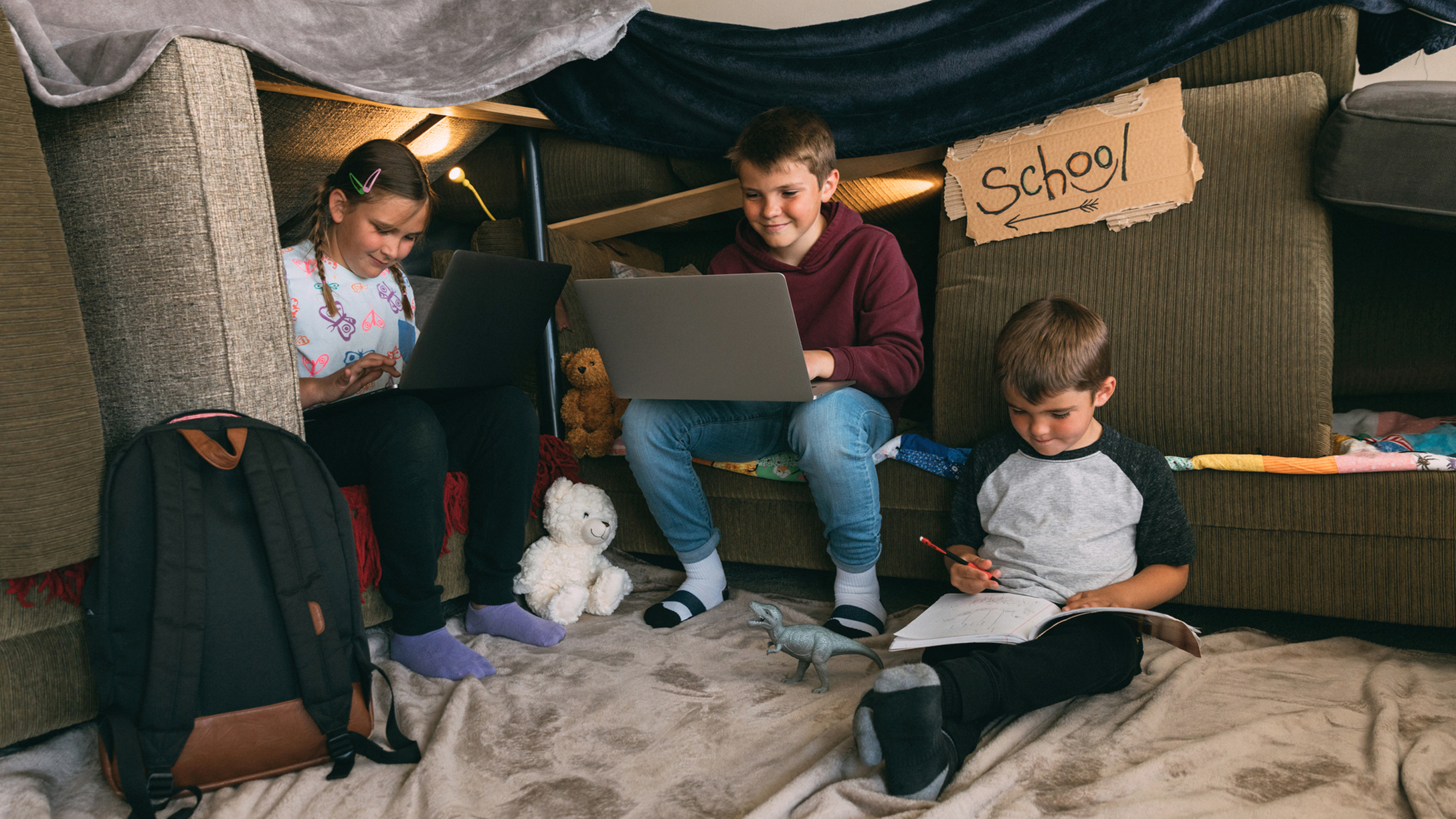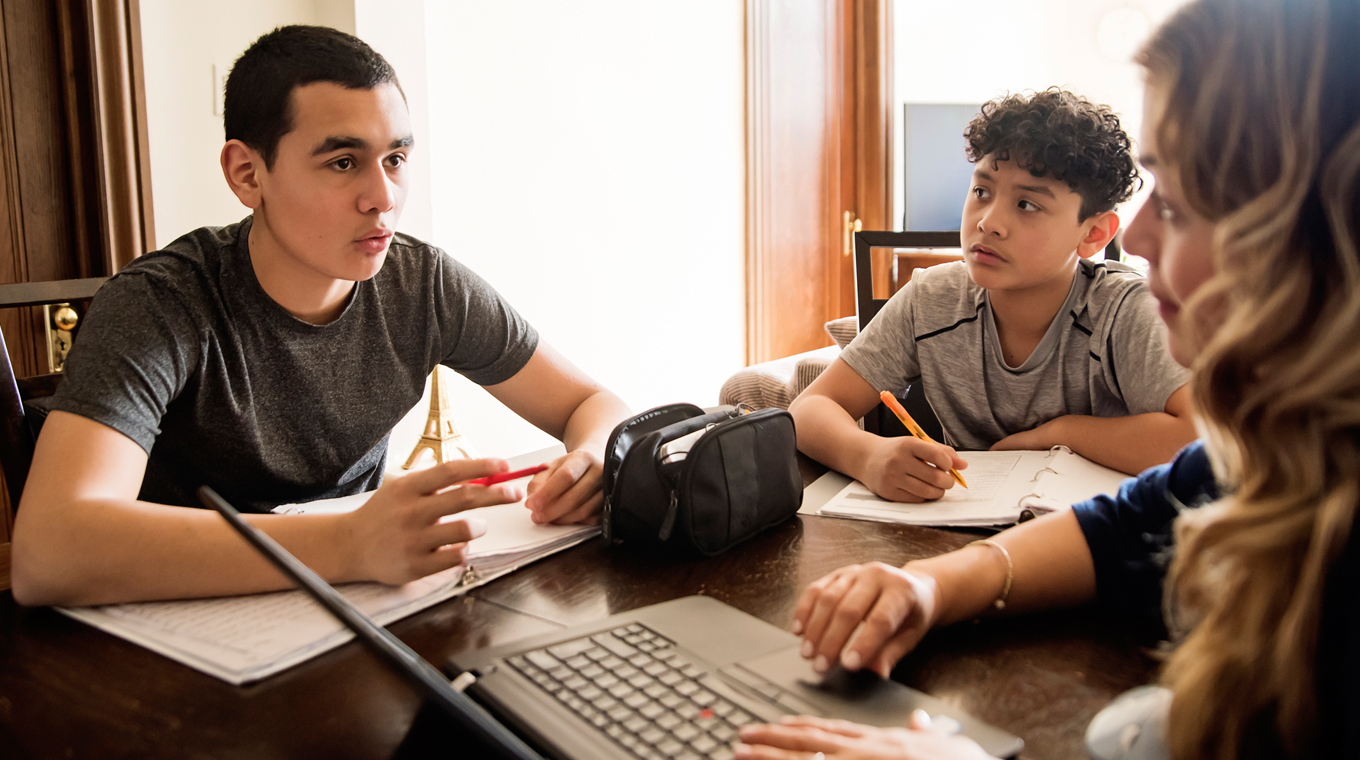
In this article:
Thanks to the pandemic, it’s not a normal school year for families as virtual learning has become the norm. Whether you’re a beginner or a pro at homeschooling kids, it can be tough to teach several kids at the same time — especially if they’re different ages. Many homeschoolers are also unused to being stuck at home with siblings.
To help out, here are some tips on how to make things easier when you have more than one child to homeschool — from how to structure your virtual learning curriculum to keeping your homeschooling kids energized and engaged.
How to arrange your homeschool program to accommodate siblings

With many libraries, museums, field trip locales, and in-person classes that cater to homeschoolers closed, it may seem as if there aren’t very many options available to you. But there are still ways you can arrange a homeschool schedule, choose homeschool curriculum, and engage your kids of all ages in virtual learning in ways that won’t drive you up the wall.
1. Make a plan
Even if you’re not super Type-A, you will need to have a general idea of what skills and subjects you want each child to learn for the year. This framework will help you figure out some basic questions like:
- What subjects or skills does each child need? Do they overlap?
- How will you teach? (curriculum, tutor, online class, videos) Can you have a private class with just your kids?
- What materials and supplies will you need? Will each child need different tech/supplies, or can they share?
- Will you have enough time to give each child personal attention in all their subjects?
- Can your wifi and/or tech withstand multiple children attending different online classes simultaneously?
Remember, you can always change your mind and plans after trying classes or materials.
2. Don’t try to replicate “school”
You’re homeschooling for a reason. Many of us only have a reference point of “school” from either our own experience or from the media. However, it would be especially difficult to replicate the classrooms of several different grades, so keep that in mind — you can make your homeschool look however you want.
3. Figure out what works best for your family and each child
Every child is different, so a style or curriculum that worked for one may not work with another. Some kids do best with every single minute accounted for and others do better with a general list of daily activities. Some kids need to be constantly followed up on, and others can be left alone to their personal discretion and motivation. You know what works best for you and your kids.
Practical tips for homeschooling multiple kids

While big picture advice is helpful, what many of us really need are practical tips we can apply to our daily homeschooling lives. Here are a few you can try.
4. Keep lessons short
This is both to cater to the more limited attention spans of younger children and also to give you time to assist your other kids. If one of them is having trouble in a subject, the most they have to wait is 15 to 30 minutes.
5. Outsource any or all classes
People often think that homeschooling means you have to teach your child everything yourself. Not true at all! Take advantage of all the online offerings currently available for kids. It’s even better now that many classes can accommodate an age range so you can have multiple kids in the same class.
6. Group your children together
Long-time homeschooler Meita Arnold recommended streamlining as much as possible. “If your kids are close in age, they can learn the same art, science, and social studies materials,” Meita told Mom.com. “If they’re further apart in age or there’s a clear gap in learning abilities/interest some modifications can be added like an extra book, assignment, or worksheet.”
7. Do unit studies
Unit studies or thematic units are overviews of a topic or theme and incorporate multiple subjects, allowing children to master a topic by exploring it from multiple angles. You can teach all your kids the same unit and supplement to account for different levels.
8. Schedule individual moments lessons
Now that there is so much togetherness in quarantine, it can be a bit too much even for the closest families. Arnold advised, “I try to find materials they can do independently, like a learning app, so we can all social distance from one another.”
9. Spend one-on-one time
Usually, the child who requires the most help will get the most time. Try to set aside 10 to 15 minutes a day to check in on each child and spend time with them. “When you need to focus on helping one child, get out a Lego set and turn on audio learning material for the others,” counseled homeschool mom Cait Blakley.
K12 homeschooling: Setting up your kids for success

No matter how many kids you have, these suggestions will make your homeschool day much easier.
10. Make sure your children get enough sleep
Getting sleep will help kids have better attention spans, memory, behavior, and general mental and physical health. “Keep bedtimes the same and practice good sleep hygiene, especially since screen-time will inevitably increase due to schoolwork,” suggested pediatrician and spokesperson for the American Academy of Pediatrics (AAP) Dr. Steph Lee to Mom.com. They will also hopefully fight less!
11. Get moving
Physical activity is important both for health and focus. “The AAP recommends at least 1 hour of physical activity several times a week,” advised Dr. Lee. “Get the body really moving, sweating, and loosening up bad postures from sitting all day.” Schedule a group dance break or music session to get all of the kids out of their chairs.
12. Schedule breaks
With our kids being required to be in front of their screens for longer periods now, they’ll need to rest their eyes, brains, and bodies more frequently. Encourage them to listen to music, take a walk, or replenish their bodies with snacks. Who knows, your kids may even surprise you by playing together peacefully!







